
Anne Ephrussi: what I’ve learned
From leading EMBL’s developmental biology research unit to setting new directions for the organisation’s training offerings, Anne Ephrussi has made an indelible mark on European life sciences
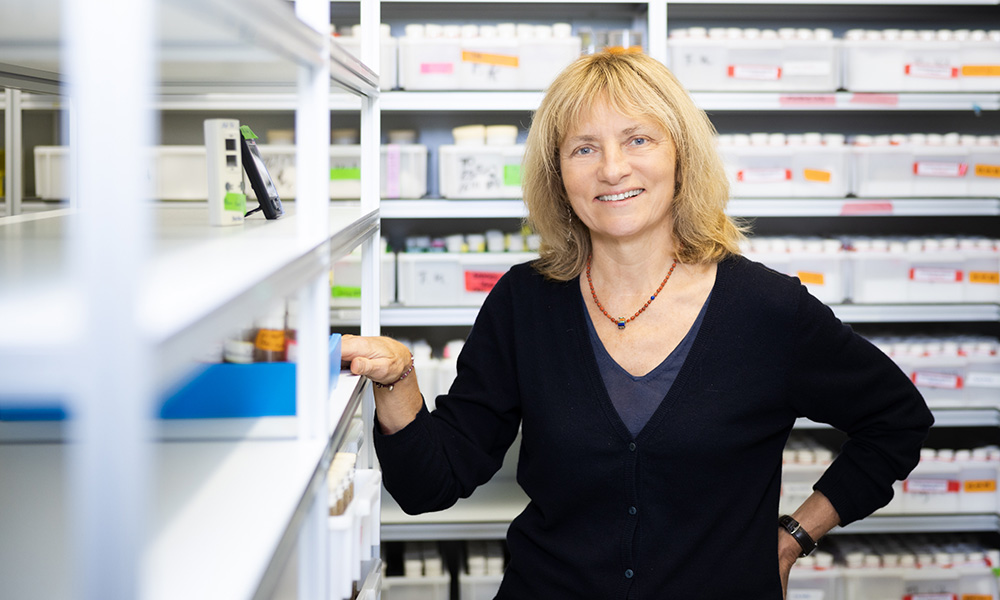
In December, Anne Ephrussi began packing up her Heidelberg lab as she officially retired from EMBL to embark on new adventures. For those who know her, it probably won’t come as a surprise that retirement doesn’t seem like much of a slow-down. With manuscripts to complete, grants to review, and seminars to give, as well as being among the very first to receive EMBL’s new researcher ‘emeritus’ status upon her departure, Anne Ephrussi’s connection to the life sciences continues.
A chat with her before her departure provided an opportunity to hear stories from throughout her career and allowed her to reflect on what she has learned along the way. But let us start with a brief introduction.
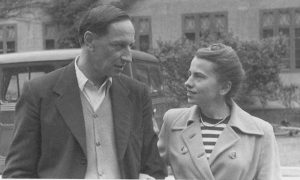
Ephrussi’s career may have seemed like a foregone conclusion with two eminent life scientist parents, Boris Ephrussi and Harriett Ephrussi-Taylor. However, Ephrussi was determined not to be pigeonholed.
When she was a little over six years old, her family moved from Paris to Cleveland, Ohio, where her parents joined several other scientists in establishing a unique developmental biology centre at Western Reserve University. Ephrussi’s mother would die seemingly at the height of her scientific career, when Anne was only 12 years old. Her father would die just 11 years later – a jarring start to a lifelong training in resilience.
Ephrussi attended Harvard University for her undergraduate studies followed by Massachusetts Institute of Technology (MIT) where she earned her PhD. After two postdocs – at Harvard University and the Whitehead Institute, MIT – she began her career at EMBL.
In 1992, Ephrussi launched her EMBL research group. Using the oskar gene as a paradigm, her team focused on understanding how RNA molecules are transported and their translation regulated in animal development, and how the germ plasm forms and induces germline formation.
“I joined Anne’s lab as a postdoc and was immediately impressed by how she would ask the key questions, pushing your project and your science further. What I was not expecting from someone as busy as Anne is how much she cares about her people, identifying who they deeply are to help them develop their skills and personality, and navigate through their career path.”
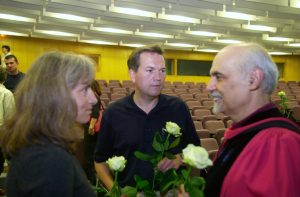
With her mother as her role model, being a scientist and having a family was never a question for Anne. “I didn’t really think about it; I just got on with it. It was not even a question!” Ephrussi said. “For me, having both a family and a lab is absolutely the best. It’s having it all! My partner, Halldór Stefánsson, a social anthropologist, who later built and ran EMBL’s Science and Society programme for 22 years, was a professor in Japan. I can’t at all recommend seven years of commuting halfway around the world. This was emotionally very tough for both of us, but I daresay that having the care of our son Alexander and the lab is what kept me going. A challenge? For me, honestly, it was pure joy. But without the EMBL day-care, it would have been a different story.”
In addition to mentoring numerous predocs and postdocs in her own lab, Anne was actively involved in shaping EMBL’s training programmes, and in 2005, became Head of the newly created EMBL International Centre for Advanced Training (EICAT). In this role, she oversaw EMBL’s predoctoral and postdoctoral programmes, as well as EMBL’s courses and conferences. She served as Associate Dean and then Dean of the PhD Programme and, together with her close colleague Matthias Hentze, developed what is now the EMBL Postdoctoral Programme. At the same time, she led EMBL’s Developmental Biology Unit from 2007 to 2021, whose focus she oriented towards organismal morphogenesis.
Her accolades are numerous. Ephrussi was elected to the French Académie des Sciences in 2008 and to the US Academy of Sciences in 2022. In 2023, she received the Society for Developmental Biology Lifetime Achievement Award, and this year, the FEBS/EMBO Women in Science Award.
What follows is a small window into the career of Anne Ephrussi, along with some wisdom she gained along the way, as told in her own words.
“Anne embodies excellence in training and is the driver behind EICAT’s success. Through her vision, EICAT has evolved to be a leading training provider for scientists at all career levels. Personally, I am grateful for her mentorship and guidance over the years which has developed into a long-lasting friendship.”
The early years
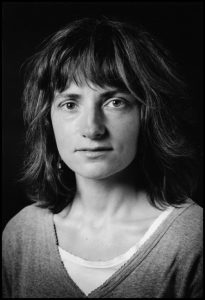
Having two parents who are both renowned scientists, I think there were expectations, but not from them. My parents never put pressure on me to become a biologist, but they always encouraged creativity. Biology was always in the air, and it fueled much of my curiosity and questions. I would hang out in their labs whenever I could, asking to be given small tasks which I took very seriously!
My parents and I talked about science. I wasn’t reading papers obviously, but I would listen – and ask a lot of questions about their work. Fairly early on, I asked my father for a book on differentiation.
I swore I would not do biology. I didn’t want to follow the obvious track. But science was part of the medium we lived in at home, although there was also much discussion of books and world history.
It was important to me to make and learn from my own mistakes. I was desperate to find my way on my own, resolved as I was to never deliberately use my parents’ influence.
During my undergrad, I was very homesick for Europe and decided to return to Europe for my PhD – and was all set to join Walter Gehring’s lab. But with my father’s death days before I graduated, I realised I needed some time to process things. I cancelled those plans and remained in Cambridge, working in labs and taking a few courses. This is when I became really fascinated with immunology, the question of how we – our bodies – distinguish self from non-self. I was awe-struck by the papers revealing how antibody diversity is generated – through gene rearrangements and somatic mutation. This led me to apply to MIT and to join Susumu Tonegawa’s lab, where I eventually tackled the question of why immunoglobulin genes are only transcribed in B cells.
“Anne personifies many of the values that have made EMBL what it is. I worked with Anne daily for more than a decade to develop EMBL’s training portfolio. Anne became far more than a colleague and a friend. She showed how two individuals who are quite different from each other could engage in constructive dialogue when they share a vision. I do not know anyone as devoted as Anne to fulfilling her responsibilities with fairness, equity, kindness, and respect. Likewise, she never shies away from difficult conversations and decisions, and I am deeply grateful for my time with her.”
Commitment to training
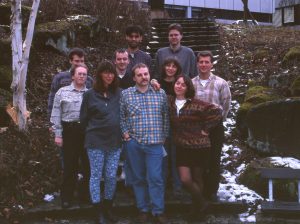
What makes my heart beat is actually my lab. In terms of the number of working hours and additional responsibilities, investing so much time and effort in developing scientific training at EMBL has posed challenges. But at a very personal level, it has been immensely gratifying, and a privilege, to help our youngest scientists excel through excellent training and find their way towards a future enriching career – be it in active research or another profession.
No guts, no glory. One of my first students and I were discussing an experiment and he said “It won’t work. I don’t want to try it.” My slightly frustrated reply was: “No guts, no glory.” Weeks later, as I joined my lab folk for lunch, I overheard them talking about their projects. Then one said, “Nah, forget it, it won’t work.”, and another retorted, “Come on! No guts, no glory!” That’s when I realised we were off to the races; the lab was on its way. The words had been repeated, they resonated, and they became a motto. So yeah, I think it’s essential to go out on a limb, to tinker, to go out of one’s comfort zone, and to dare to try new things.
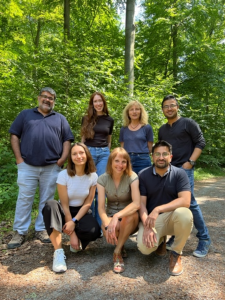
I think that creating a postdoc programme was one of the most important things we invested in during my time at EMBL. The idea was born at a heads of units meeting chaired by Iain Mattaj, when we were discussing how to make the best use of funding that had been allocated to transversal research.
Right then and there, we decided to set up a competitive, interdisciplinary postdoctoral program that would attract top-quality, highly ambitious, and imaginative fellows to EMBL. It did, and, as hoped, has led to remarkable new collaborations and discoveries.
Reflections on EMBL
From the first day, EMBL was an extraordinary organisation where you could come in as a young group leader and take your ideas and run with them – and start pipetting on the first day. There was no pressure to publish in the first couple of years – certainly no pressure to go for low-hanging fruit, quite the contrary. We were – and are – encouraged to be bold and ask big questions. And new ideas emerged with nearly every conversation over coffee in the cafeteria. The cafeteria was, and remains, the most important spot on the EMBL Heidelberg campus.
“I joined Anne’s lab in 1996 as the first Asian postdoc in her lab. As a mentor, Anne supported us to keep our own motivation in the research. She was skilful in discussing even with non-native English speakers like me, which made her lab truly international. In writing and editing papers, I sometimes sat side by side in her office with her, which gave me an indispensable experience in scientific writing at a high international level. Anne was kind and helpful even after I left her lab. Because her birthday is on the same day as mine, she remembers the day, and sends me an email every year, taking care of my scientific life.”
The ability to work hand in hand with technology development has always been very special here. It is hugely empowering and a real feature of EMBL.
It is a real privilege to be able to do fundamental research. At EMBL, there isn’t pressure to do applied research. At the same time, you are welcome and encouraged to go in that direction if you wish and your science takes you there.
There were lots of big questions. I came here with questions about germline development, having discovered that a particular protein – Oskar – could induce the formation of functional germ cells at different sites in the Drosophila embryo, based on the location where it was produced within the egg cell. This was amazing! And that experiment paved the way for much of our research on the properties of the Oskar protein and the mechanisms that ensure that it is only produced at the right place and at the right time.
Philosophy towards life and science
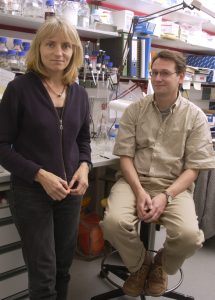
To be paid by society to satisfy one’s own curiosity is truly a privilege and a responsibility. This is one of the things I tell my lab every few months. It’s not exactly a mantra, but do you realise that we scientists are being paid by society to answer questions that have piqued our curiosity? It’s an incredible responsibility.
These are precious resources. We must be extremely rigorous in our analyses and ensure we have done everything possible not to prove our hypotheses, but rather to disprove them. It’s about not falling in love with one’s ideas and being misled by results.
I am fundamentally an optimist. And I believe this has been central in all respects of my life, including science.
Passion is key. And then there is luck. And logical thinking. And some guts and tinkering.
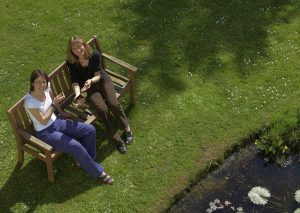
Often scientists are asked about their any ‘Aha! moments’ – when something important is suddenly revealed. I have had the fortune of two major ‘Aha’ moments of my own. The first was when my grad student friend George Church and I discovered that proteins are bound to several sites of near-identical sequence within the immunoglobulin enhancers, but only in cells where these genes are transcribed. You have to understand that at that time, no one understood what enhancers were or how they worked. This finding was absolutely key and incredibly exciting. The second was when as a postdoc in Ruth Lehmann’s lab I mislocalised oskar mRNA to the anterior of the developing egg, and this led to the formation of germ cells at that ectopic site in the embryo.
Several other such special moments I’ve experienced second-hand – though no less intensely – with students and postdocs in my lab. The look of awe on their faces, silence, and then the eruption of joy. It’s super intense. But it also, immediately, causes worry: is the result correct? Have we really excluded all other explanations? My mother used to say “Science is a cruel mistress.” I agree! But that’s what comes with passion!
Our research is an extension of ourselves. If you are sloppy or faking data, you are cheating on your life. It makes one wonder how people value their own life if they are prepared to completely misrepresent it.
It’s a question of ethics towards society. We owe society to do our very best research – rigorously and truthfully. And we owe it to ourselves.
“There is nothing like doing science. The joy of making sense of natural phenomena and having a hand in understanding how the world works never fades. But without guidance and encouragement from a mentor, this possibility would remain unknown to most of us, and we’d be deprived of the rich and rewarding experiences that come from doing science. Anne provided me with such guidance and encouragement during my PhD and supported my growth as a scientist to become what I am now. I have been inspired by her scientific curiosity and personal integrity. Even many years after I left her lab, Anne has been there for me.”


